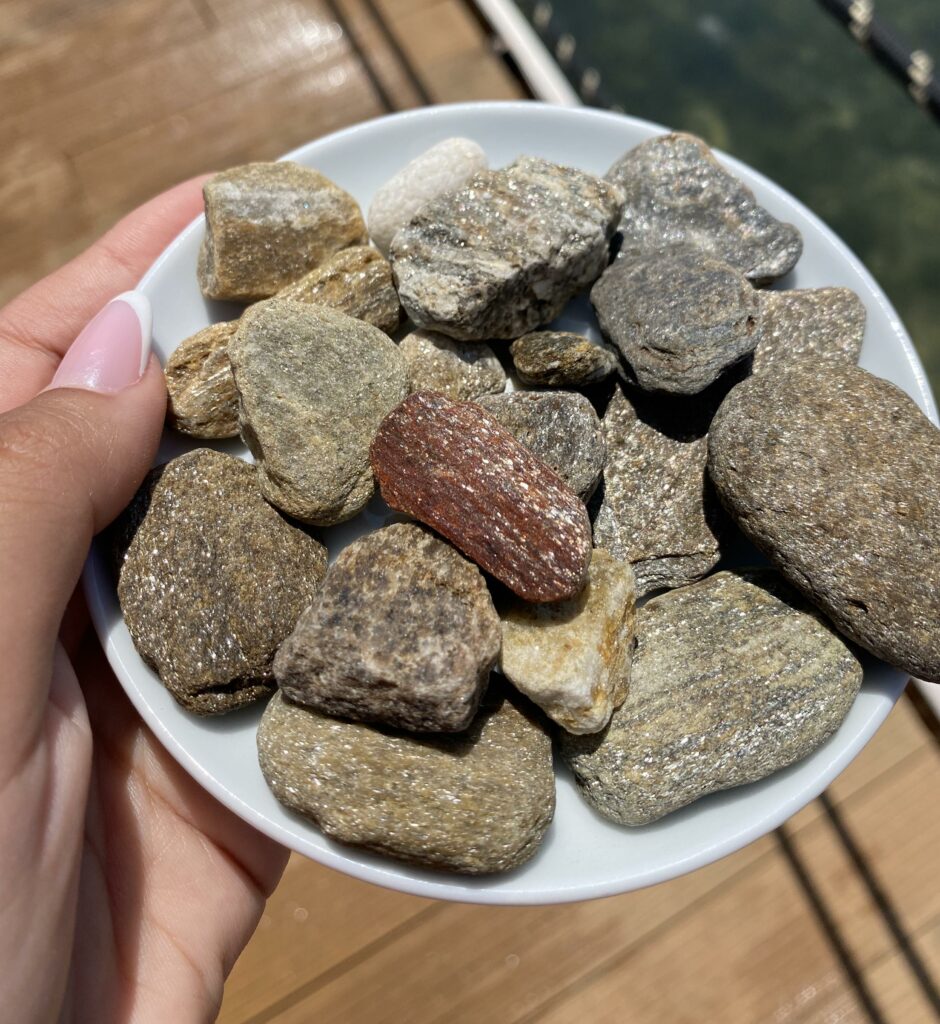Mica schist stones are shimmery primarily because of their high mica content. Mica is a mineral known for its thin, flat, and highly reflective sheets. Here’s a breakdown of why mica schist exhibits this characteristic shimmer:
Mica schist is rich in mica minerals, such as muscovite, biotite, or chlorite. These minerals have a distinctive platy or flaky structure.
Reflective Surfaces
The flat, sheet-like crystals of mica have a perfect cleavage, meaning they can split easily along their planes into very thin, flat layers. These layers are highly reflective, which causes the stone to glisten when light hits the surface.
Alignment of Minerals
During the formation of schist, the intense heat and pressure cause the minerals, including mica, to become aligned in parallel layers or planes. This alignment enhances the reflective quality because the mica flakes reflect light consistently in a similar direction, creating a “sparkling” effect.
Metamorphic Process
Schist is a metamorphic rock, which means it forms under conditions of high temperature and pressure that can rearrange the minerals into layers. The process helps concentrate and align the mica crystals, making the stone’s surface appear more uniformly “shimmery”.
In essence, the shimmer of mica schist is a result of its mineral composition, particularly the abundance and alignment of mica minerals, which reflect light in a striking manner.
- Online rock and mineral club for collectors of all levels!
- Find community with like-minded rock and mineral enthusiasts.
- Monthly Giveaways!
- Free Access to Entire Digital Library of Products (annual memberships)



